What’s more dangerous than a highly venomous snake? How about one that is also extremely fast? Using their strong muscles and loose skin, snakes push forward effortlessly, and many of them must be quick if they want to eat. Along with super-fast slithering ability, some snakes have high-speed strikes. We’ll include both in this list. Check out the nine fastest venomous snakes and learn what makes them so speedy!
Common Death Adder

The common death adder has the fastest strike in Australia and one of the fastest in the world.
©Vladislav T. Jirousek/Shutterstock.com
The common death adder is a highly venomous species native to Australia, where it occurs across the eastern and southern coastal regions of the continent. This species is commonly found in woods, forests, heaths, and grasslands. Common death adders are notable for their wide, flat, and triangular-shaped heads. They also have rather thick bodies and grow between 2 and 3 feet long. These snakes have bands across the length of their bodies in brown, red, gray, black, cream, and light pink. Because of these earth tones, they are masters at camouflage, concealing themselves among loose leaf piles and other debris.
This snake belongs to the Elapidae family, but unlike most members of its family, the common death adder lies in wait for its prey. In fact, it can wait for several days before the right prey comes along. It strikes quickly, injecting its deadly venom, and waits for its victim to die before consuming it. While this species is not aggressive, humans sometimes fall prey to this ambush predator who does not back down when afraid.
The common death adder has the fastest strike in Australia and one of the fastest in the world. It can inject its venom into unsuspecting prey in less than 0.15 seconds. Their stocky bodies prevent them from slithering quickly across terrain, but their impressive strike time makes up for it.
Cottonmouth
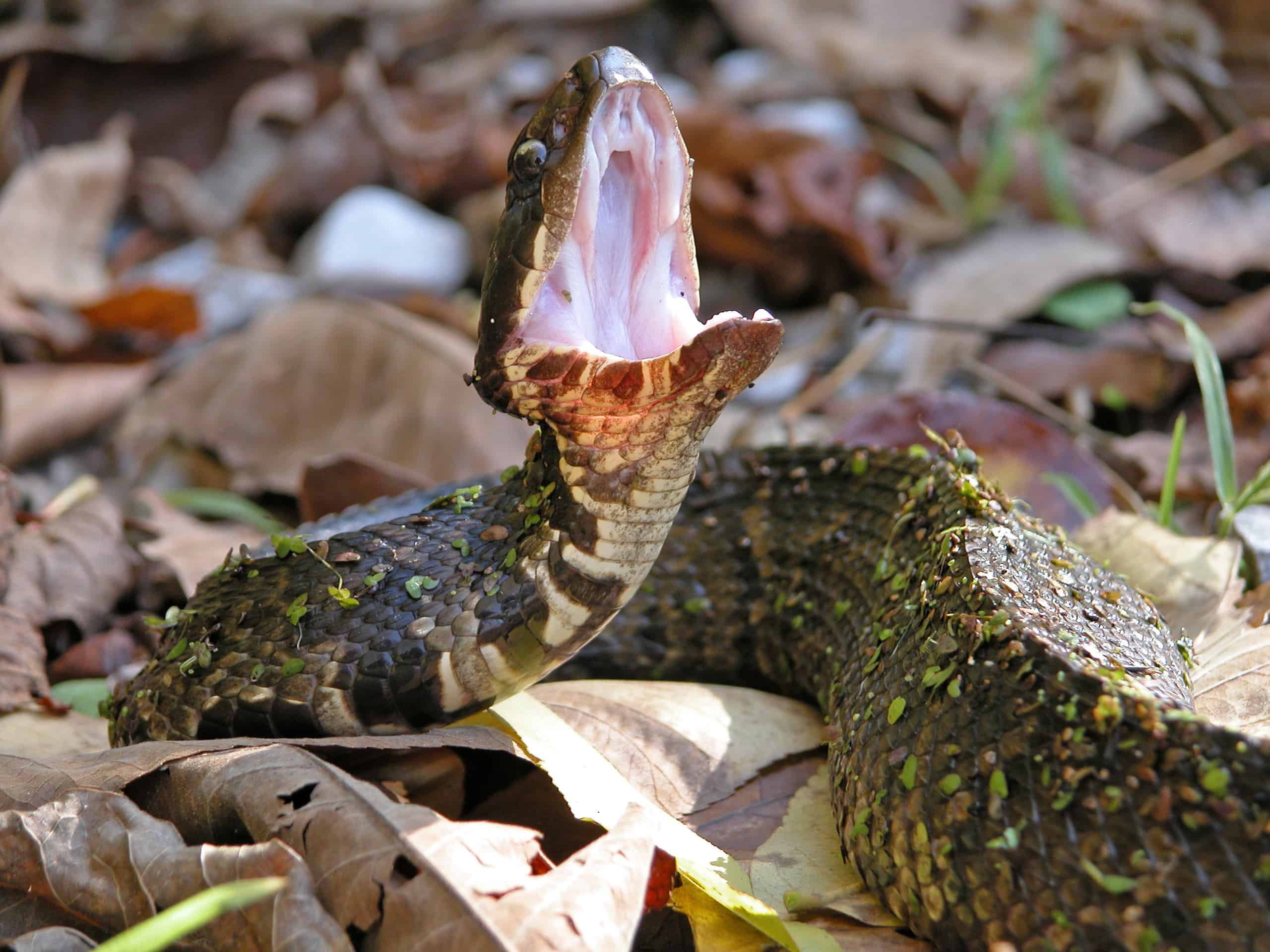
The cottonmouth is known for speed, with the ability to progress more than 9 feet per second.
©iStock.com/Gerald DeBoer
While this snake goes by many names, the cottonmouth’s scientific name is Agkistrodon piscivorus. It is a pit viper native to the southeastern United States, where it is known for its semiaquatic lifestyle and painful bites. These snakes are typically between 2 and 3 feet long. However, some have grown over 5 feet long, especially those in the eastern part of their range. Cottonmouths have distinct heads and blunt snouts. Most individuals are almost all black and feature color patterns of brown, gray, olive, and tan. They also feature crossbands of dark brown to black, with juveniles typically having more contrasting colors.
This species exists in the southeastern states of the country, where it is often associated with water, such as swamps, marshes, creeks, ponds, and lakes. They like shallow areas and do not typically venture into cold, deep water. You can also find this species in palmetto thickets, pine woods, and forests.
Cottonmouths have powerful cytotoxic venom that can inflict more serious injury than that of copperheads. However, it’s not as potent as rattlesnake venom. The cottonmouth is known for its speedy movements, with the ability to progress more than 9 feet per second. However, they can only move this quick in short bursts.
Western Diamondback Rattlesnake
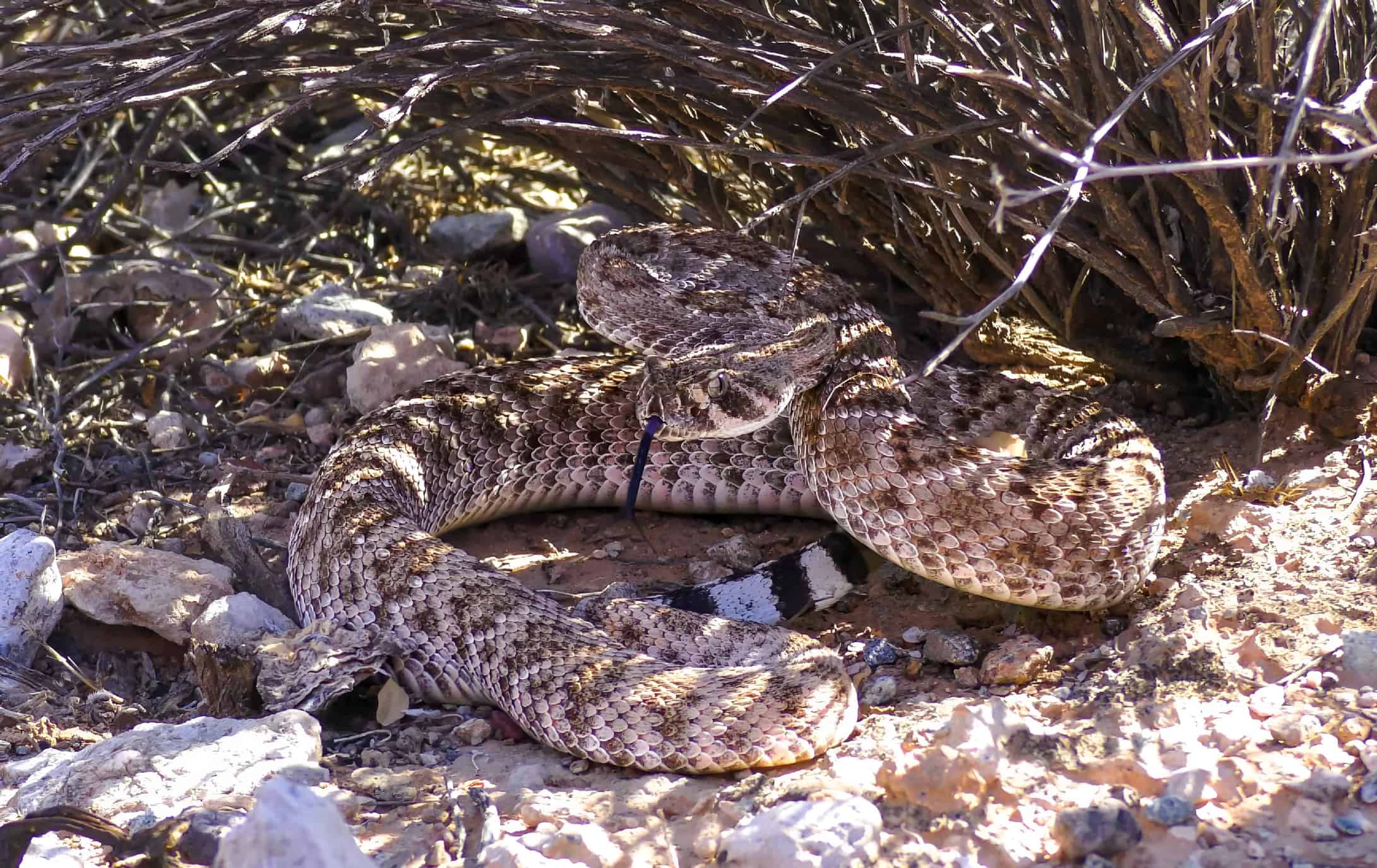
The western diamondback can travel between two and three miles per hour.
©iStock.com/Banu R
Western diamondback rattlesnakes are native to the southwestern United States and Mexico. These venomous vipers grow between 4 and 5 feet, with some individuals reaching more than 6 feet long. They are one of the largest rattlesnake species and known for their diamond-shaped markings. These snakes are dusty-looking, with grayish-brown color. But they can also be pinkish-brown, yellow, white, and red.
You can find this species in a variety of habitats, including rocky canyons, coastal plains, deserts, grasslands, scrub, and pine forests. They actively hunt or wait to ambush prey, such as small rodents and birds. They are also one of the few snake species that will scavenge for food.
Western diamondback rattlesnakes can move between two and three miles per hour in short bursts, either when retreating or pursuing prey. While this is fast in snake standards, the average human could easily outrun this species. However, these rattlesnakes will not attempt to pursue you, as they do not attack offensively.
Yellow-Bellied Sea Snake
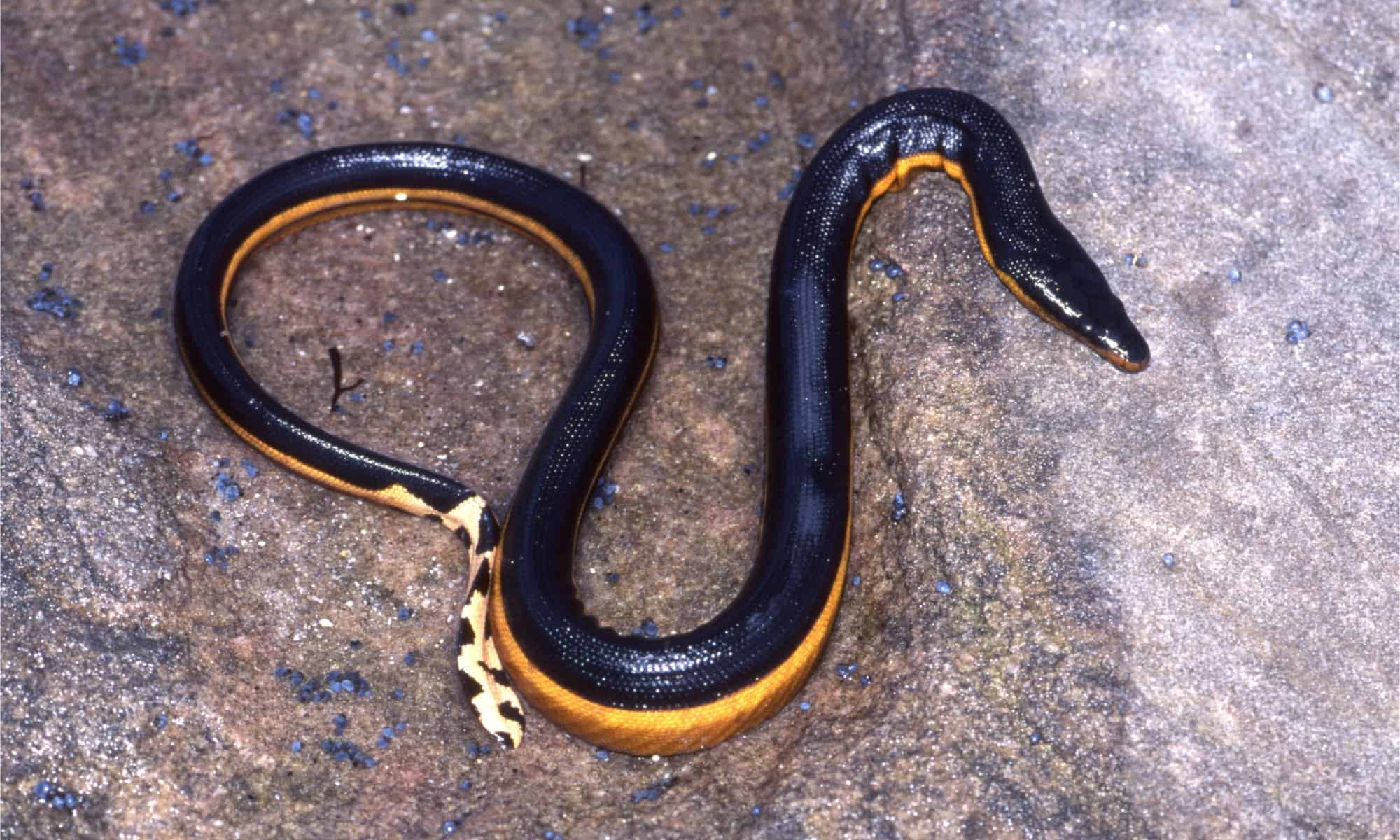
These snakes have quick burst speeds when diving, fleeing danger, and catching prey.
©Ken Griffiths/Shutterstock.com
The unusual and striking yellow-bellied sea snake is a venomous species found in tropical ocean waters around the world, except for the Atlantic Ocean. These snakes have yellow bellies and brown backs and adaptations that allow them to live their lives at sea. They have a unique paddle tail used for swimming and valved nostrils. While they live in saltwater, they require freshwater for drinking, which they find on the surface of oceans in the form of precipitation.
This species has potent venom, and they hunt by floating on the surface, swimming backward, and rapidly lunging. These snakes have quick burst speeds when diving, fleeing danger, and catching prey.
Eastern Brown Snake

Eastern brown snakes can reach a staggering top speed of 12 miles per hour.
©Ken Griffiths/Shutterstock.com
Native to Australia and New Guinea, eastern brown snakes are highly venomous and slender snakes that can grow up to 7 feet long. They are pale brown to black, with cream-colored undersides. This species inhabits a wide range of environments, including fields, savannah woodlands, grasslands, and the outskirts of urban areas. They are absent from dense forests.
Eastern brown snakes are one of the most venomous snakes in the world. Their venom affects the circulatory system and can lead to cardiac arrest.
These solitary snakes are very fast, even outpacing a sprinting human. Eastern brown snakes can reach a staggering top speed of 12 miles per hour, while human’s average six to eight miles per hour.
King Cobra

The
king cobra
is one of the fastest snakes in the world, reaching up to 12 miles per hour.
©Michael Allen Smith from Seattle, USA, CC BY-SA 2.0 - License
This venomous snake is endemic to Asia and despite its name, is not a true cobra. King cobras belong to their own genus and are the world’s longest venomous snake, growing between 10 and 13 feet. Despite its wide-ranging distribution, this species is not commonly found in the wild.
King cobras are apex predators that eat other snakes. After injecting their prey with venom, they use their flexible jaws to swallow their prey whole.
The king cobra is one of the fastest snakes in the world, reaching speeds of up to 12 miles per hour. While they have the means to defend themselves, king cobras would rather use their speedy abilities to flee the scene.
Black Mamba
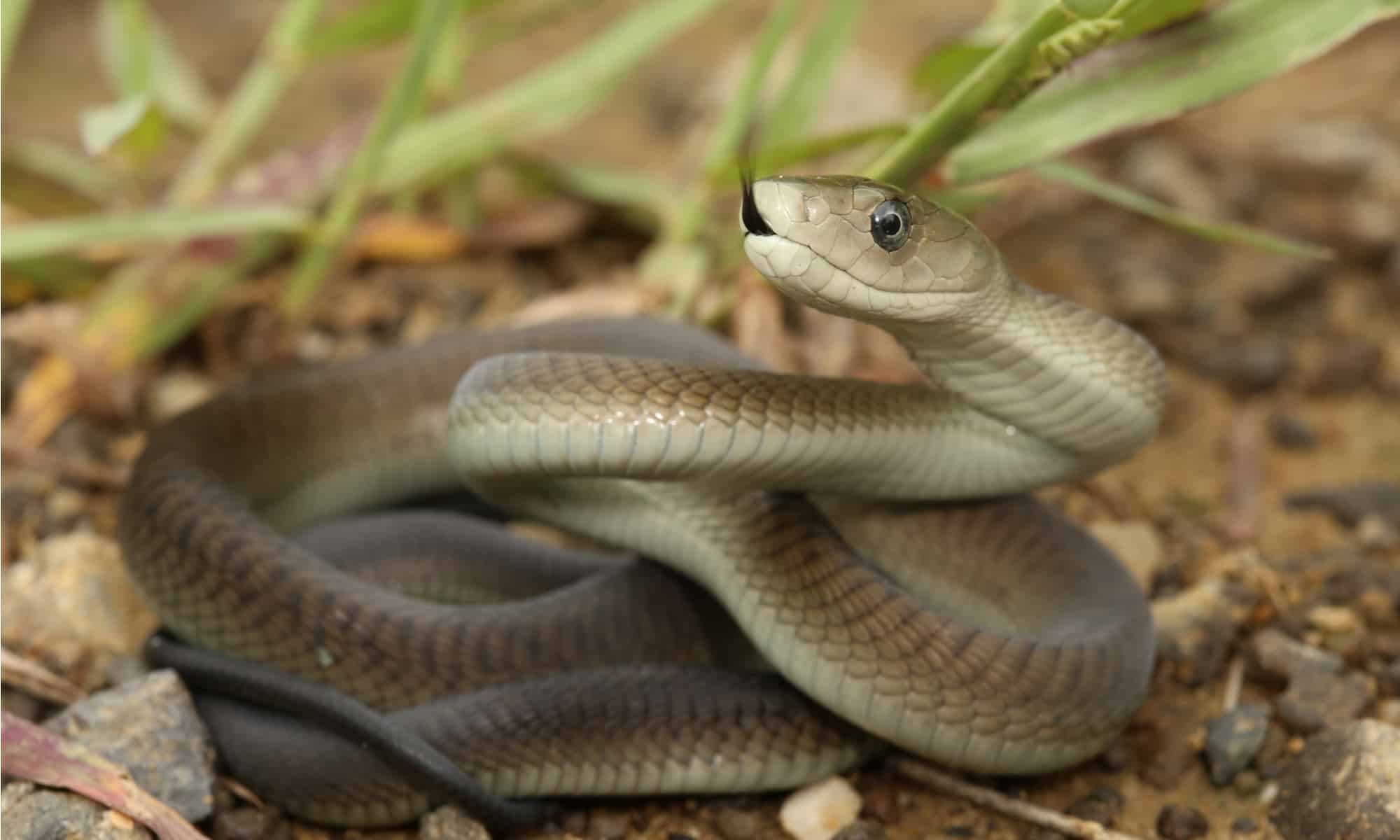
Black mambas are one of the fastest venomous snakes, slithering up to 12.5 miles per hour.
©NickEvansKZN/Shutterstock.com
Black mambas belong the Elapidae family and are native to sub-Saharan Africa. Behind the king cobra, this species is the second-longest venomous snake, growing between 6 and 9 feet long. However, some have been recorded up to 15 feet.
These snakes are highly venomous and can strike their prey at a significant distance. They can also deliver a swift series of bites in one go. Black mambas are one of the fastest venomous snakes in the world, slithering up to 12.5 miles per hour.
Sidewinder
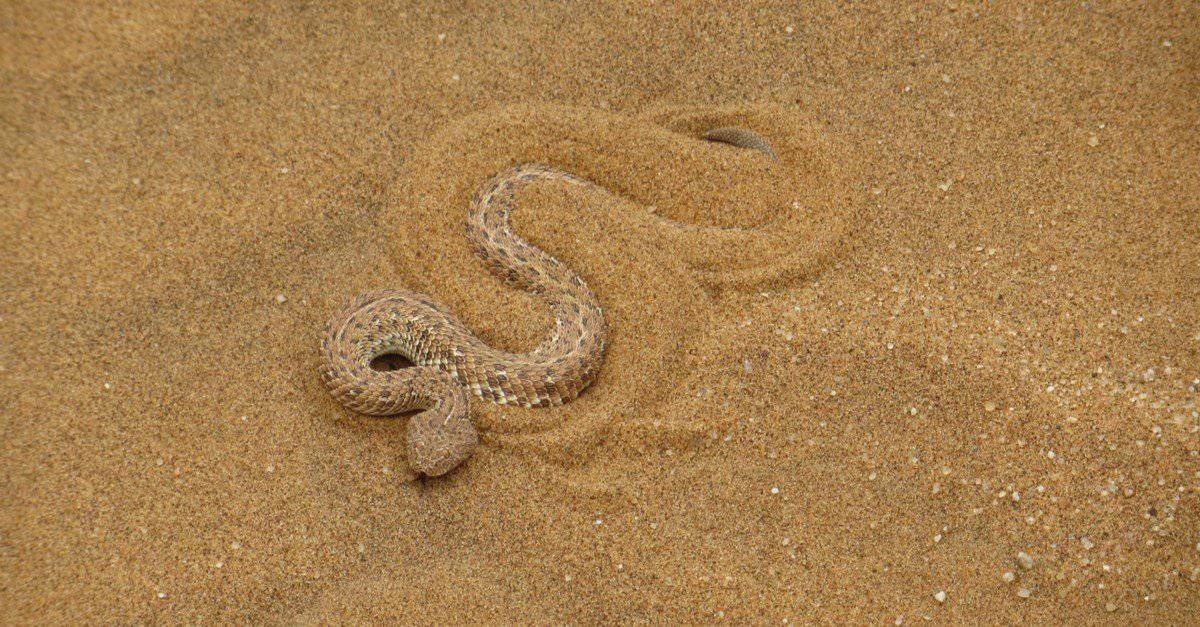
Using their unique locomotion, the sidewinder can move up to 18 miles per hour!
©Roger de Montfort/Shutterstock.com
The sidewinder, also known as the horned rattlesnake, is a pit viper from the rattlesnake family. It is native to the deserts of the southwestern United States and northwestern Mexico.
It gets its name from the unusual way it travels, by moving in a sideways motion across slippery sand. While this species is venomous, it produces weaker venom than other rattlesnakes. Using their unique locomotion and sandy environment, the sidewinder can move up to 18 miles per hour!
Gaboon Viper

The strike speed of the Gaboon viper is between 175 to 200 miles per hour.
©Stu Porter/Shutterstock.com
The Gaboon viper is an interesting-looking venomous species found in the rainforests and savannahs of sub-Saharan Africa. Gaboon vipers are unique thanks to their long 2-inch fangs and having the highest venom yield of any species of snake.
While the Gaboon viper is known for its sluggish movement and docile behavior, this species is fast in another way. The strike speed of the Gaboon viper is between 175 to 200 miles per hour. While there is currently no research on the fastest-striking snake in the world, the Gaboon viper is likely at the top.
The photo featured at the top of this post is © Mark_Kostich/Shutterstock.com
Discover the "Monster" Snake 5X Bigger than an Anaconda
Every day A-Z Animals sends out some of the most incredible facts in the world from our free newsletter. Want to discover the 10 most beautiful snakes in the world, a "snake island" where you're never more than 3 feet from danger, or a "monster" snake 5X larger than an anaconda? Then sign up right now and you'll start receiving our daily newsletter absolutely free.
Thank you for reading! Have some feedback for us? Contact the AZ Animals editorial team.






